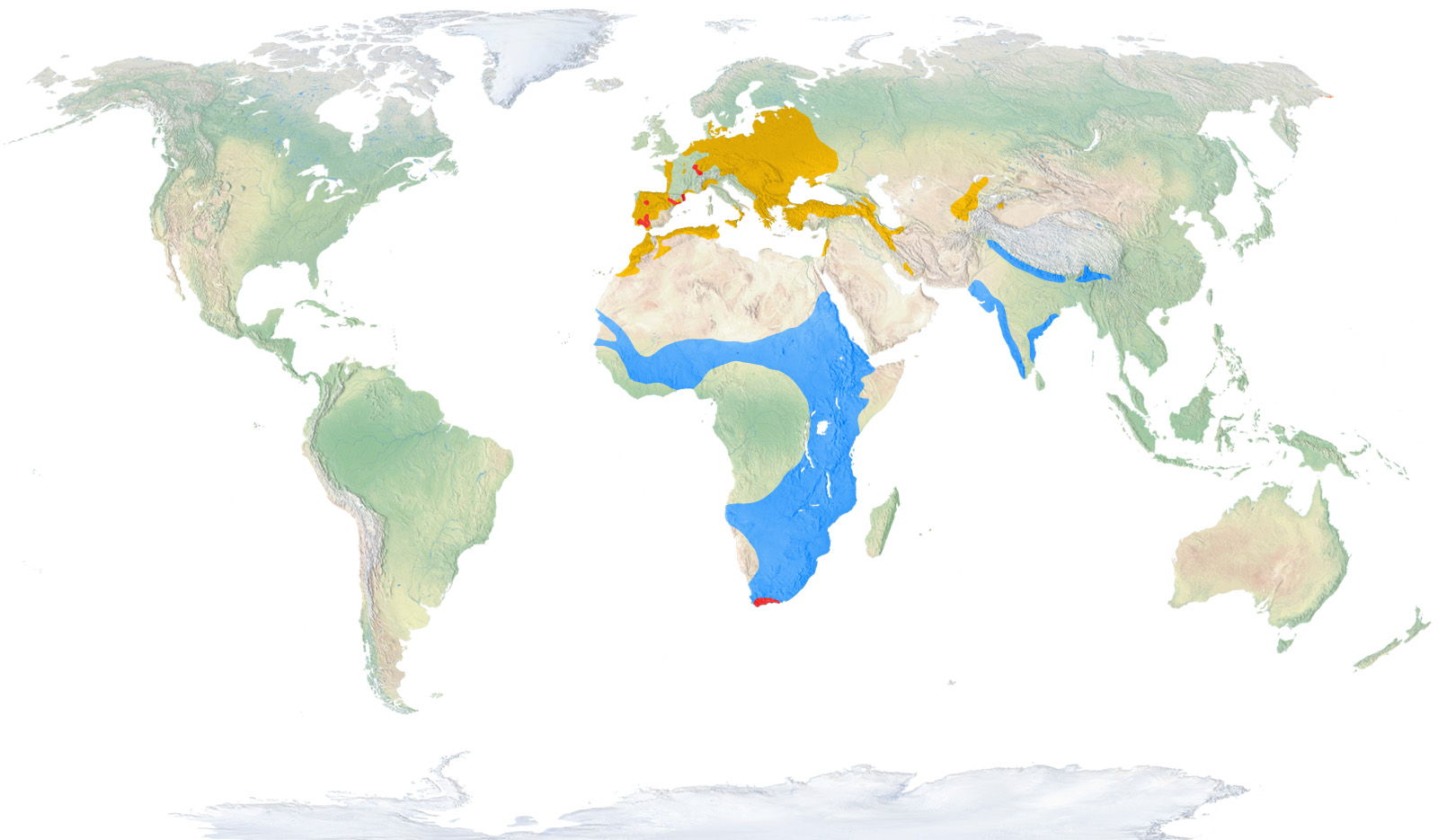White stork
White storks are found in marshes and meadows near water, where it can feed on invertebrates, fish, amphibians and reptiles. It is a migrant, spending the winter in sub-Saharan Africa and returning to Europe from February to nest in the same place, year after year, usually on towers and bell-towers.
Recently, it has become more common to see storks in winter, as they can find food all year round in rubbish tips.
Natural habit
Good part of Europe, Africa and Asia

- Distribution / Resident
- Breeding
- Wintering
- Subspecies
Risk level
- Extint
- Extint in the wild
- Critically endangered
- In Danger
- Vulnerable
- Near threatened
- Minor concern
- Insufficient data
- Not evaluated
Taxonomy
Physical characteristics
Biology
Reproduction
Biology
The white stork’s characteristic traits are its white plumage, except for black at the end of its wings and the bright red bill and legs. Its silhouette is also characteristic, with long, slender neck and legs. It is the largest breeding bird in Catalonia, only surpassed in size in Europe by cranes, which can measure up to 100 cm high and weigh up to 4.5 kg.
It is found in swamps, flooded meadows and grassy plains near water in a good part of Europe, North Africa, eastern and central Asia. In winter, they can migrate as far as the west coast of India and all of sub-Saharan Africa, far from jungle and wooded areas
An opportunistic species, their diet is comprised mainly of insects, reptiles, frogs, fish, bird chicks and some micromammals such as mice. They have even been spotted in recent years feeding at the rubbish tips near large cities.
They make large nests with twigs, branches, roots, leaves and all types of different materials, which can be more than 2 metres high, with 1.5 metre diameters that weigh more than one tonne. They build them in treetops or on cliffs and, much more frequently, in different buildings like churches, old buildings and electric towers. They tend to lay an average of four eggs, which they incubate for 33 or 34 days. Calculations estimate that storks can live 35 years.
A quite silent bird, it emits a characteristic noise during the reproduction period, produced by clattering its mandibles together, using it to greet its partner.
A migratory species, the European population spends the winters in eastern trans-Saharan Africa and in South Africa. Around February, they start to return to Europe, where they can be seen until the beginning of autumn. Storks are very faithful to their nests, returning to the same one year after year. However, in recent years, the number of specimens that do not make the annual migration has increased considerably, remaining all winter in our lands. They can travel over 10,000 km in their migrations.
This bird’s expansion has been closely linked to human beings, due agriculture and buildings, where they usually create their nests. However, at the end of the last century, they suffered a steep decline as a consequence of industrialisation and the mechanisation of croplands, which put them in serious danger of extinction. The species has revived recently and populations are continuously growing in Spain, which conserves the largest population in the entire continent of Europe. In Catalonia, the white stork is now a resident and nest-building summer bird in western districts and in the marshes of Empordà, where the species was reintroduced not many years ago. Like everywhere, the presence of specimens wintering in different wetlands of Catalonia is increasingly common.


